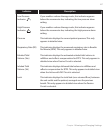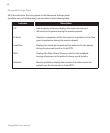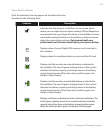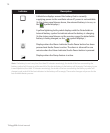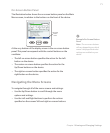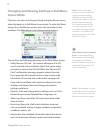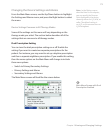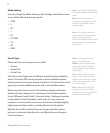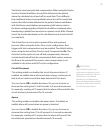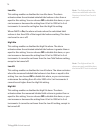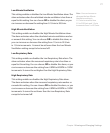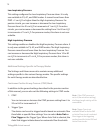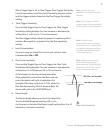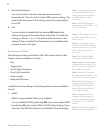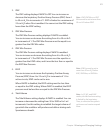
Chapter 5 Viewing and Changing Settings
75
The Passive circuit provides leak compensation. When using the Passive
circuit in Volume Ventilation, the set Vti is delivered to the patient
above the calculated circuit and cu (or mask) leak. This is dierent
from traditional active circuit ventilation where the cu (or mask) leak
reduces the tidal volume delivered to the patient. Volume ventilation
with the Passive circuit delivers an inspiratory tidal volume close to
the device setting regardless of leak; this should be considered when
transitioning a patient from an active to a passive circuit. With a Passive
circuit, Vte is estimated based on the calculated sum of circuit and cu
(or mask) leak.
The Active Flow circuit monitors proximal ow and proximal
pressure. When using the Active Flow circuit conguration, ow
trigger with leak compensation may be enabled. The default setting
when using the Active Flow Circuit is Leak Compensation On. The
clinician has the option to turn o leak compensation; however,
unintentional leak will not be compensated. Both options measure
the ow at the proximal ow sensor. Leak compensation is not
available in the Active with PAP circuit conguration.
Circuit Disconnect
This setting enables or disables the circuit disconnect alarm. If
enabled, an audible alarm will sound when a large, continuous air
leak (such as mask removal) has been detected in the circuit.
You can choose O to disable the alarm. Or, you can increase or
decrease the setting from 5 to 60 seconds in 5 second increments.
For example, a setting of 10 means that the alarm will sound after the
circuit has been disconnected for 10 seconds.
Apnea
This setting enables or disables the apnea alarm. If enabled, an
audible alarm will sound when an apnea is detected.
You can choose O to disable the alarm. Or, you can increase or
decrease the setting from 10 to 60 seconds in 5 second increments.
For example, a setting of 10 means that the alarm will sound if the
time between spontaneous breaths exceeds 10 seconds.
WARNING
You should not rely on any
single alarm to detect a circuit
disconnect condition. The Low
Tidal Volume, Low Minute
Ventilation, Low Respiratory
Rate, and Apnea alarms should
be used in conjunction with the
Circuit Disconnect alarm.



